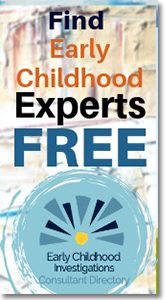A Push for Play-Based Learning
Diane Ackerman
In an online article on the website, the74million.org, Kate Stringer describes“New York’s new standards for early learners, which encourage play and ‘active, joyful engagement.’”
She quotes the state’s Board of Regents, who said, “This is an intentional effort to remain within developmentally appropriate parameters that do not pit play against ‘academic’ learning,” after the Regents voted to adopt Next Generation math and English standards to replace the Common Core. “That makes sense to early-learning researchers,” Stringer explains, “who have long argued for play-based education for young students. Years of research have demonstrated the importance of play for childhood development, yet the ‘either/or’ argument between play and academics, with their strict standards and assessments, has inhibited making playtime more prominent in the early grades.
No Child Left Behind was ‘a play killer,’ while pre-NCLB, standards were too ‘laissez-faire,’ said Temple University professor Kathy Hirsh-Pasek, an expert in developmental psychology. ‘What we need is something in the middle, what we call guided play and a playful learning approach.’
In fact, it’s playtime that prepares students for classes like math and reading, Hirsh-Pasek said: Learning how to play teaches collaboration and community building, which aids language development through listening and talking. Language, in turn, is necessary for reading, writing, math, and every subject after. Critical thinking skills are also developed by creativity and innovation learned through play. And play teaches skills such as the confidence to learn from failures.”
And, Karen Stephens, in her article, Imaginative Play During Childhood: Required for Reaching Full Potential, (which forms the basis for an Out of the Box Training Kit), writes: “It’s very important to distinguish the type of play that nurtures all that positive development. It’s not just any type of child activity that does it. For instance, some may call it ‘play’ when a child follows a teacher’s step by step directions during a craft project. It might be a hands-on learning experience, but different from the types of authentic play researchers have concluded is most critical to early development. Stephens offers eleven characteristics of authentic play. Here are a few of them. Authentic, beneficial children’s play is:
- pleasurable and enjoyable, voluntary, and self-initiated;
- self-sustaining without needing rewards, coercion, or reinforcement from others;
- spontaneous and flexible, involving fluid problem-solving that doesn’t have one right answer and may include multiple or changing solutions;
- not directed, dictated, regulated, formatted, or structured by a parent, supervising adult or teacher.”
Source: “A New Push for Play-Based Learning: Why Districts Say It’s Leading to More Engaged Students, Collaborative Classmates … and Better Grades,” by Kate Stringer, The 74 millions.org, February 6, 2018
For more information about Exchange's magazine, books, and other products pertaining to ECE, go to www.ccie.com.
|
© 2005 Child Care Information Exchange - All Rights Reserved | Contact Us | Return to Site


